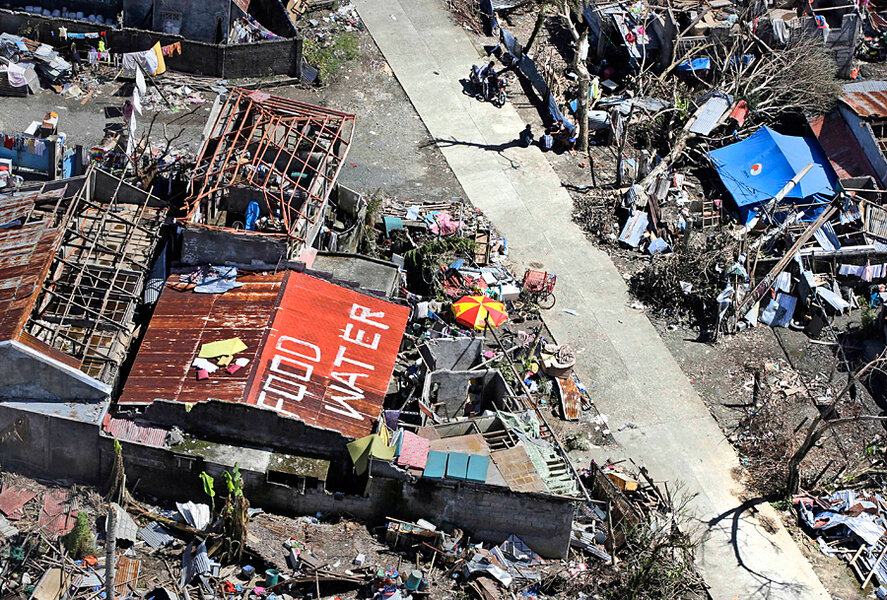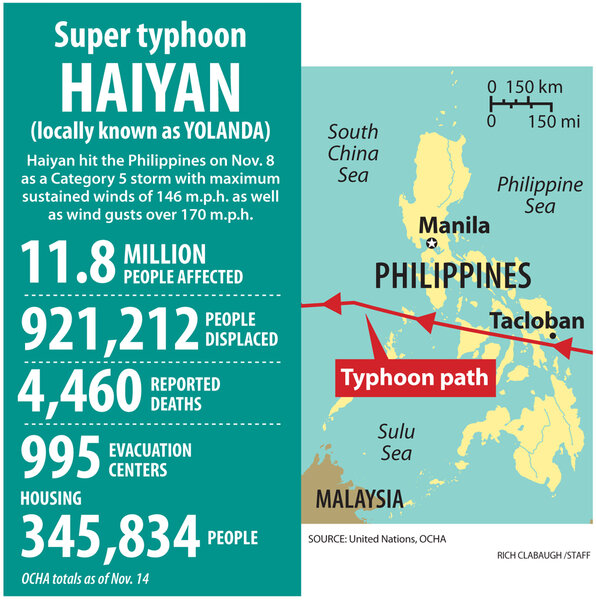Are food and water really the priority in a humanitarian crisis?
Loading...
| EASTERN SAMAR, THE PHILIPPINES
Food and water are the top two necessities when disaster strikes. Right?
In devastated regions of the eastern Philippines that were hit hard two weeks ago by Typhoon Haiyan, US military commanders delivering aid have sometimes been surprised to learn what people need – and what they don’t.
“You’d think food is number one,” says Brig. Gen. Paul Kennedy, commander of the 31st Marine Expeditionary Brigade. “But no – it’s water and it’s shelter.”
That’s because people can survive far longer without food than they can without water, of course. But it's also because a lack of shelter means that sickness and water-borne illnesses can spread more quickly when people are unprotected from the elements, says Gen. Kennedy.
US military officials say they have learned lessons from aid groups while working together on Typhoon Haiyan relief. And so the US military has now flown in roughly 10,000 “units” of tarp, in military parlance, for people whose homes have been destroyed by winds or washed away by the storm surge.
“People need a roof over their head,” says Kennedy. “In some places you have a house but no roof--so let’s give them a roof.” In other cases, people are using the tarpaulins now to make primitive lean-to’s.
Getting supplies like water into isolated communities is only part of the challenge--the other trick is making sure families can carry the supplies once they have been distributed.
In open air markets in Tacloban, one of the cities hardest hit by the storm, water ladles are in high demand. This is because the US military and aid groups have been delivering water in large bladders and office water-cooler sizes that need to be siphoned into smaller containers.
USAID is also shipping out thousands of jerrycans. These help with carrying water as well as fuel, which will quickly become the next top priority, says Kennedy.
Water purification systems in places like Tacloban are now in operation, but they need fuel to keep running. And power outages caused by the storm mean that the pumps at gas stations--even those that have intact fuel tanks--are out of order and could take several weeks to fix.








